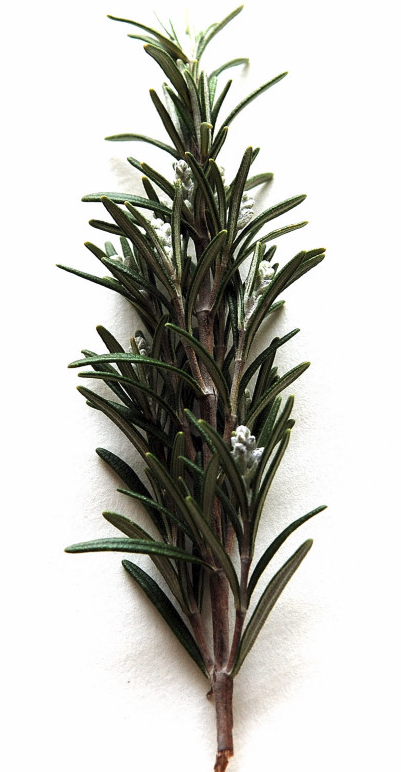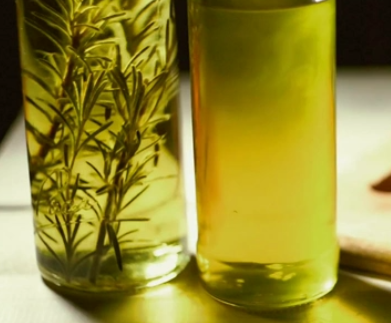| "Descrizione" by AColumn (9336 pt) | 2022-Nov-08 11:34 |
Review Consensus: 10 Rating: 10 Number of users: 1
| Evaluation | N. Experts | Evaluation | N. Experts |
|---|---|---|---|
| 1 | 6 | ||
| 2 | 7 | ||
| 3 | 8 | ||
| 4 | 9 | ||
| 5 | 10 |
Rosmarinus O-cinalis (Rosemary) leaf oil is a term of 'Rosmarinus officinalis leaf oil' found in the ingredient list of cosmetic formulations.
Rosemary ( Rosmarinus officinalis L.) is an intensely fragrant evergreen plant that grows in Mediterranean countries and belongs to the Lamiaceae family.

Used in :
- Nutrition
- Cosmetics
- Cleaners
Has properties :
- Tonic
- Antioxidants
- Stimulants
- Disinfectants
Rosmarinus officinalis leaf oil as essential oil extracted from rosemary benefits from all these positive properties.

What it is used for and where
Industrial technology has used rosemary in many ways, and it is above all rosemary essential oil that has gained a market in medical, food and cosmetics. Its production goes through four stages: drying, steam distillation, supercritical carbon dioxide extraction, and hydrodistillation. Drying is the most delicate part of the production preparation process and is the one that determines the quality of the final product and can be achieved by different methods:
- Air-drying at room temperature. This phase can last up to months.
- Microwave drying which involves a faster drying time, but many phytocompounds may lose their pharmacological efficacy.
- Oven drying which involves a faster drying time and phytocompounds do not lose their pharmacological efficacy.
- Freeze-drying: involves freezing the product at around -80°C for 12 hours and freeze-drying immediately afterwards. The best method of drying as the phytocompounds do not lose their pharmacological efficacy, but retain their vitality in the best way.
Rosemary essential oil has an impressive number of uses.
Medical
In the phytochemical analysis, 18 components were identified, namely 13 flavones, two organic acids and three diterpenes. A total of 82 components were found in the volatile fractions, including hydrocarbon monoterpenes and 1,8-cineole, camphor, borneol and verbenone as dominant components, α-pinene and camphene among the oxygenated monoterpenes (1).
Among the polyphenolic components present in rosemary, carnosic acid has antioxidant and antimicrobial properties and rosmarinic acid has neuroprotective and anti-inflammatory properties.
Rosmarinic acid also has anti-oxidative properties.
Rosemary extract exerts a relaxing action on the muscles of the trachea and intestines and has therapeutic potential in the prevention of various diseases including cataracts, atherosclerosis, peptic ulcer disease, and cardiovascular disorders (2).
Rosemary essential oil obtained from leaves or flowers is used in dermatology to treat wounds and minor skin eruptions, in gastrointestinal disorders as an anti-dispeptic, diuretic and antispasmodic in renal colic (3), in neurology for headaches and circulation problems, in pneumology as an expectorant.
Cosmetics
This oil is included in cosmetic formulations as an emollient and as a fragrance and can activate, through the flavonoids it contains, different pharmacological effects useful in cosmetics such as antimicrobial action, skin relaxing. disinfectant.
Food
Used as a spice and seasoning in foods and as a natural preservative in the food industry
References__________________________________________________________________
(1) Napoli EM, Siracusa L, Saija A, Speciale A, Trombetta D, Tuttolomondo T, La Bella S, Licata M, Virga G, Leone R, Leto C, Rubino L, Ruberto G. Wild Sicilian rosemary: phytochemical and morphological screening and antioxidant activity evaluation of extracts and essential oils. Chem Biodivers. 2015 Jul;12(7):1075-94. doi: 10.1002/cbdv.201400274.
(2) al-Sereiti MR, Abu-Amer KM, Sen P. Pharmacology of rosemary (Rosmarinus officinalis Linn.) and its therapeutic potentials. Indian J Exp Biol. 1999 Feb;37(2):124-30. Review.
(3) Ulbricht C, Abrams TR, Brigham A, Ceurvels J, Clubb J, Curtiss W, Kirkwood CD, Giese N, Hoehn K, Iovin R, Isaac R, Rusie E, Serrano JM, Varghese M, Weissner W, Windsor RC. An evidence-based systematic review of rosemary (Rosmarinus officinalis) by the Natural Standard Research Collaboration. J Diet Suppl. 2010 Dec;7(4):351-413. doi: 10.3109/19390211.2010.525049.
| Evaluate |

